Continuing our journey to becoming a carbon positive bank
We believe our bank can have a positive impact on the world around us.
We’re committed to minimising — and ultimately reversing — our environmental impact and operating as sustainably as possible.
We believe that net zero no longer goes far enough. We’ve pledged to become carbon positive by 2035, which means our actions will actively remove more carbon from the atmosphere than we have been responsible for emitting.
In 2022, we published our first ever carbon report, and it certainly won’t be the last. We have committed to measure, report and improve on an annual basis.
Here, you can read more about our motivation, the steps we’ve taken and our plans for sustainability.
Working towards carbon positive
We’ve always tried to keep our impact on the planet in mind. We’re app-only and branchless, operate a four-day week and are based in an award-winning green building surrounded by woodland that we manage for biodiversity.
Our 2022 carbon report confirmed this to be the case by measuring our direct operational and supply chain emissions (excluding our lending) as 463 tCO₂e — a strong starting point which translates into just 1.49 tCO₂e per full time employee at Atom. We backed this up by signing the UN Carbon Neutral Now pledge, becoming the first UK bank to do so, and joining Bankers for Net Zero.
As we grow, we want to continue to understand and further reduce the impact we have on the planet at both a company-wide and employee level. We recognise that we need to do more to live up to our aspirations of being the best bank we can be — and that challenge excites us.
Our commitment
We’ll be investing for the benefit of the planet by removing carbon from the atmosphere. We’ve just started this journey, but we promise to be transparent about what it means, where we are and where we’re going.
01 Measure
our impact and progress02 Reduce
our emissions03 Substitute
for eco‑friendly alternatives04 Invest
in green opportunitiesOur 2023 carbon report

In our 2022 report, we measured our bank’s environmental impact covering the calendar year of 2021.
This year, we’ve adjusted our timescales to align with the release of our Annual Report. As a result, we’re now reporting on carbon emissions covering the 2022–2023 financial year.
Once again, we worked with Alectro, an emissions insight specialist, to dig deeper into every aspect of the business, including operations, travel, facilities, remote working, suppliers and more.
Our report is founded on the principles and guidance set out in the UN’s Greenhouse Gas (GHG) Protocol, the world’s most widely used greenhouse accounting system.
Adopting the GHG Protocol as our standard for reporting enables us to benchmark ourselves and work towards science based targets for reducing our emissions across the three ‘scopes’ of that system.
Throughout the report we show you the good and the bad to ensure that we’re transparent and forthcoming with our carbon emissions. We’re proud of the results and can’t wait to make further strides on our journey.
In the 2023 reporting year, we applied one major update to reporting for the 2022 reporting year. Data was taken directly from Google’s Carbon Footprint tool for our Google Cloud Platform (GCP) cloud computing impact. This takes into account a more detailed dataset than we previously had access to and aligns our reporting methodology directly with GCP’s methodology. Find more information here.
Our 2023 carbon report results
Below, you’ll find the results of our carbon report.
Before we dive into the findings, there are a couple of key considerations to make:
COVID no longer had an impact on our report for 2022–2023. In our last report for 2021, emissions from commutes were much lower than in a typical year. This year we have witnessed a large jump in transport emissions.
Due to a more detailed understanding and standard for reporting emissions from cloud computing services, we have updated the data from our cloud provider — Google Cloud Platform — to this new, higher level of accuracy.
The headlines
Our total impact was
673 tCO₂e
A value of 1.49tCO₂e per employee (based on the average of 452 full-time employees in 2022–23).
Holding the per capita emissions constant between 2021 and 2022/23 may not sound like much, but with the return to commuting and heavier use of the office we knew that we had to make big changes elsewhere in our business to accommodate the rise in travel-related emissions. This is unpacked in more detail below, as is the reason why we have got our scope 1 + scope 2 emissions (heating, cooling and core power supply) for both of our offices down to just 16 tCO₂e for the full year.
Please note: tCO₂e is tonnes (t) of carbon dioxide (CO₂) equivalent (e) — the standard measuring unit for greenhouse gases.
Major contributions were:
Employee commute
Electronic equipment
Cloud computing
Other factors
Our results in detail
Let’s break down the results of our carbon report a bit further and look at some of the categories in more detail.
Facilities
Facilities
The impact from facilities typically comes from four sources: power, heating space and water, cooling, and water consumption.
The Rivergreen Centre, our home and the source of most of our facilities emissions, is an eco-friendly, innovative office space located at the heart of Durham. It has previously achieved a BREEAM rating of “Excellent”.
Atom HQ - The Rivergreen Centre


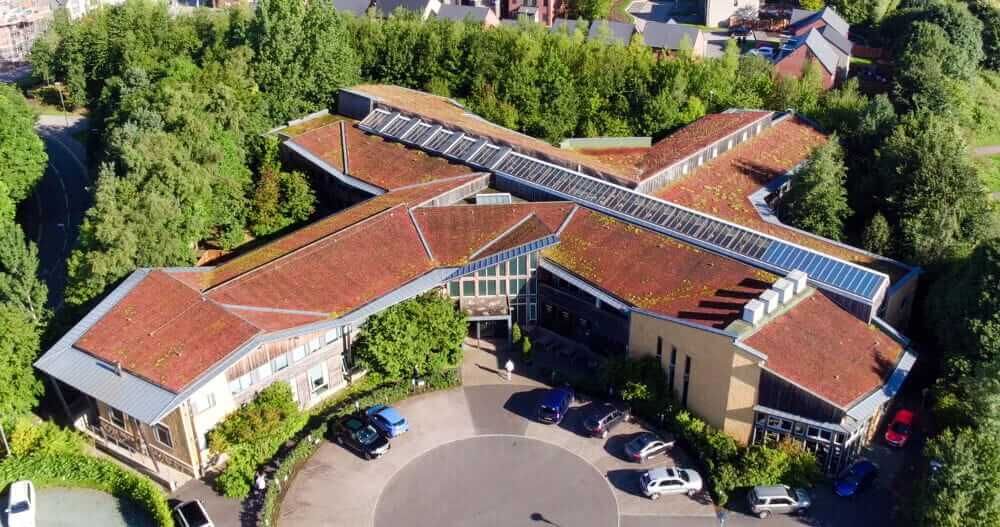
Rivergreen features a central ‘rammed earth’ wall, which uses the material from excavating the basements to act as a temperature regulator for the whole building.

The living space and hot water systems are powered by biomass boilers and a solar hot water system, and we have no air conditioning in the building. Our grey water systems use recycled rainwater that, alongside natural and stack ventilation, reduces our dependence on mains infrastructure — and keeps down costs.
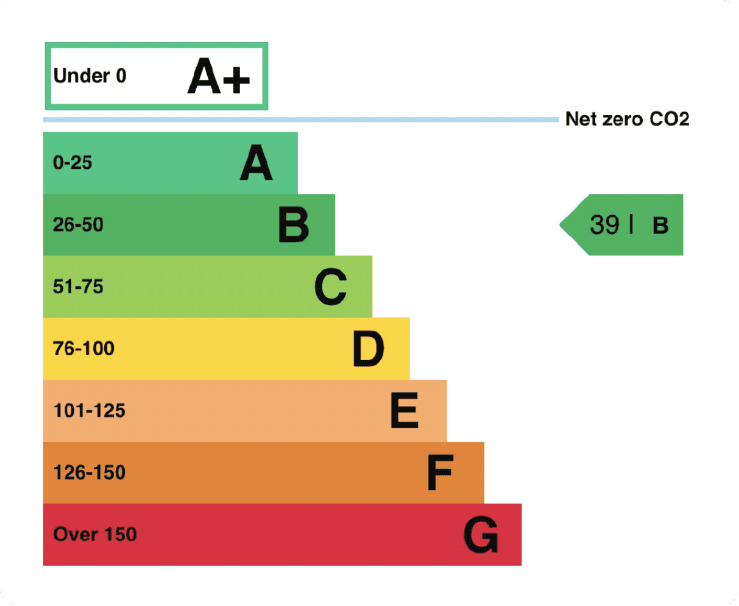
All of this sits under an extensive and very beautiful green roof in a wonderful woodland setting that we manage for biodiversity.
The Rivergreen Centre is a great example of an efficient building going beyond standard design to receive a B (39) on the Energy Performance Certificate (EPC) scale — the national average is 100.
In 2021, our electricity came from a mixed tariff that we inherited with the building. We have since switched to a 100% renewable tariff.
This is the first full year that we’ve seen the benefit of switching to zero carbon electricity suppliers, reducing Scope 2 emissions by 55 tonnes.
This has offset some of the increased Scope 3 emissions caused by the return of daily commuting and business related travel, which were lower in 2022 due to COVID and periods of lockdown.
Since the pandemic, we’ve committed to a hybrid working model. This means, while we still have people remote working, emissions associated with activities at home have fallen. This is a move we believe is better for both our team and the planet.
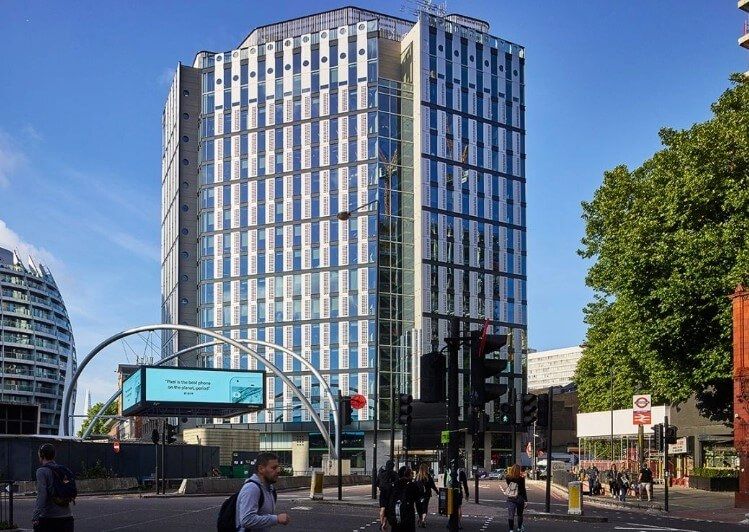
We also operate an office space in London, where electricity comes from a renewable tariff, resulting in zero Scope 2 market-based emissions.
Operations
Operations
Operations emissions increased this year due to one major cause: an improvement in the cloud computing data provided by a third party.
Although the cloud computing data increased the impact compared to the previous report, there was a real reduction when compared with the improved data for last year. When recalculated, the 2022 impact of 198.05 tCO2e fell to 165.89 tCO2e due to service improvements and general efficiency gains.
Atom bank uses Google’s cloud infrastructure for its cloud computing needs, and, as they are one of the global leaders in sustainability, the operating emissions were completely offset by them.

Our purchased goods remained high, increasing on our previous report. This was chiefly due to the purchase of electronic equipment, such as laptops and monitors, for new staff. As our team has grown, this means the need for equipment for new additions has also increased.
In 2022–2023, we have successfully recycled all unused IT equipment and removed single use plastic from the business, wherever possible.

Transport
Transport
We saw an increase in the annual distance and emissions from commutes to work.
Commuting rose from 54.25 tCO2e in our last report to 187.82 tCO2e this year.
These emissions increased as COVID-19 restrictions were lifted before this reporting period, so more staff returned to the office. This was supplemented by an increase in headcount for the team as a whole.

We had predicted that this impact could be much higher — perhaps up to 390tCO2e, but the inputs provided by the team helped to keep this lower than expected.
However, more people returning to the office had a positive impact on working from home emissions, which decreased by 50% and went some way to offsetting the increase in commuting emissions.
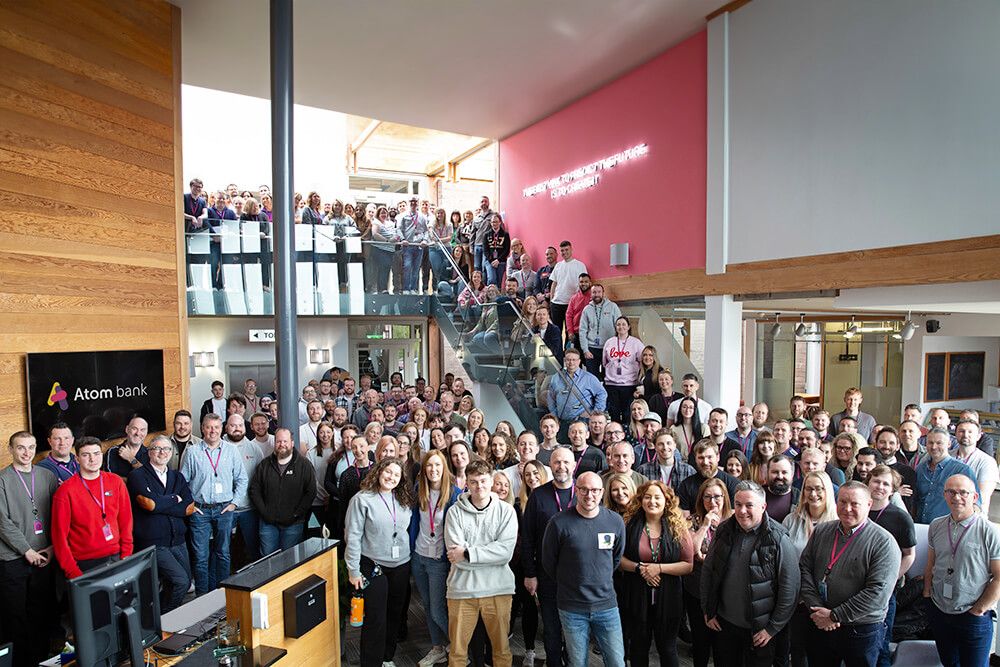
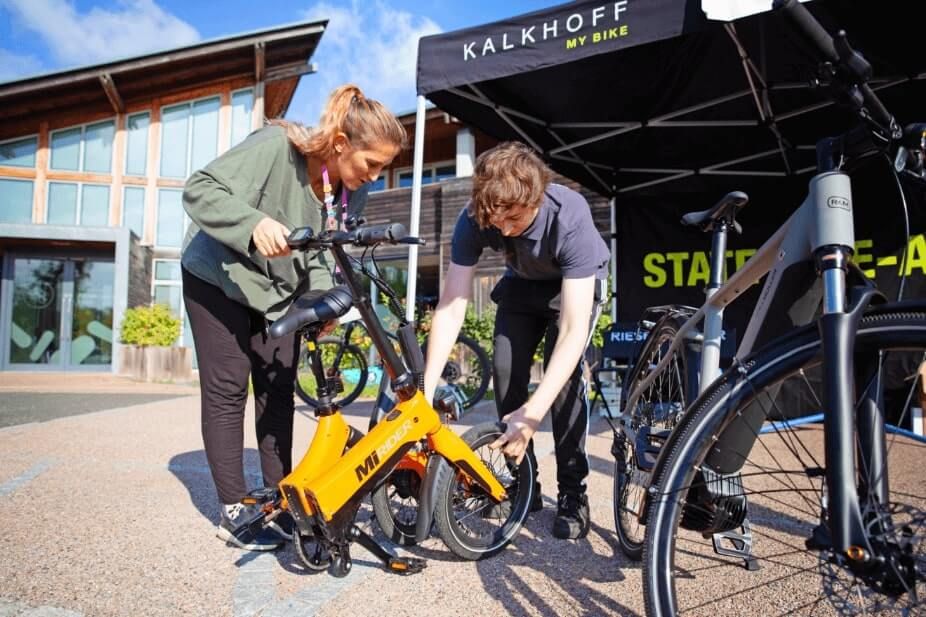
Additionally, the distance travelled by low-carbon methods rose from 11% to 23%, and the average commute intensity dropped accordingly. Although this is still a work in progress, the early signs of improvement are positive.
Our supply chain
We’ve made some progress since our last report, but we’re continuing to review our supply chain and speak to our partners in an effort to find areas of improvement.
Supply chain values are not typically accurate or consistent, so we’ve chosen not to report them here.
What are the next steps?

Over the last year, Atom has seen something closer to the normality of pre-pandemic times, with more people travelling and working from our office spaces and more travel for business. We’ve also increased our headcount, with a larger team now working for our bank.
As we anticipated, our total emissions have increased as a result of this return to normality (as well as from the improved cloud computer data we’re now reporting). However, they are still well below expected for a business of our size, which shows that we’ve set out from a strong position.
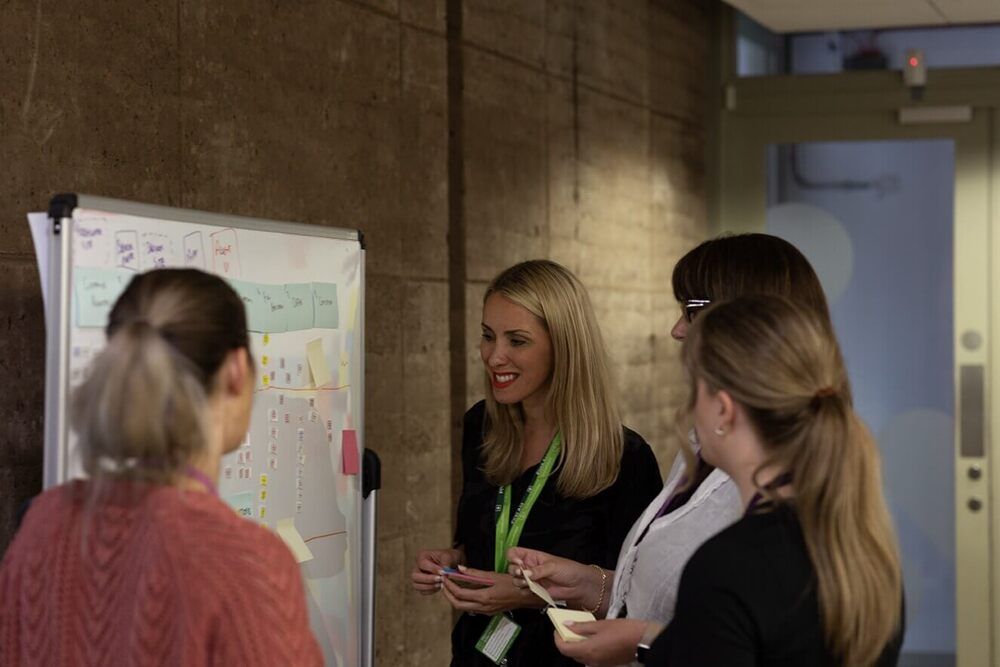

Because our first 2022 carbon report was somewhat of a standalone year due to the pressures of COVID-19, these new results represent a more ‘standard’ year for us. Going forward, we will treat these results as the ‘base year’ for future reports. We continue to recognise the need to take further action so that we can continue on our journey towards becoming carbon positive.
What are we doing in the short-to-medium term?
Annual carbon footprint reports
We will continue to measure and track our progress by reporting our carbon footprint annually.
Making electric vehicles more accessible to our team
We’ve made progress in our plan to enable the leasing of electric cars for employees through a salary sacrifice scheme. Electric bicycles are already eligible for our Cycle to Work scheme. We’ve partnered with a local firm to promote this to employees who’re within a 30 minute cycle of our HQ.
Continuing programme of employee workshops
We will continue our series of sessions providing tips and advice for sustainably working from home, which enables employees to make better informed decisions on a day to day basis.
Hiring an ESG Analyst
We’ve recruited a full-time ESG Analyst who will work in a dedicated role to further accelerate us towards our goals.
Four day week
This reporting year is the first to be measured after our permanent switch to a four-day working week. This has many benefits, including cutting commuting and working from home emissions by 20% in a year.
Continue making eco-minded purchasing and supply decisions
We will continue to make purchasing and supply decisions with our commitment to the environment in mind as part of our Environmental Procurement Policy. For example, we have already made the decision to remove single use plastic from the business. However, only 52% of our supply chain aligns with net zero goals, so we will continue to work with and challenge these firms to make the steps they need to.
Strengthening our commitments
In the last year, we became the first UK bank to sign the UN’s Carbon Neutral Now pledge, a voluntary agreement to reach carbon neutrality as a business. We also joined Bankers for Net Zero to accelerate our transition to net zero through policy alignment.
Continue our approach to recycling and reusing tech equipment
Over the last year, we’ve successfully recycled all unused IT equipment in our business. We’ll continue to follow this approach and look for ways to expand and refine it.
Understanding our funded emissions better
We are currently exploring partnerships with external data providers to measure and benchmark our funded emissions. This will ensure we are compliant with regulation, support our customers to reduce their own carbon emissions and provide greater clarity to investors and other stakeholders about Atom’s progress to becoming carbon positive by 2035.
What does the long term future look like?
We anticipated that our impact and emissions would increase as our business returned to normal in a post-pandemic world. But we’re now in a position where we have a reliable baseline to measure against as we move forward.
Over the last year, we’ve been researching and developing projects and policies that will form our long term strategy and investments.
We’re not ready to announce anything just yet but we’re excited to share them with you soon. Please keep an eye on our blog and social media channels to find out about how we’ll move towards becoming a carbon positive bank.